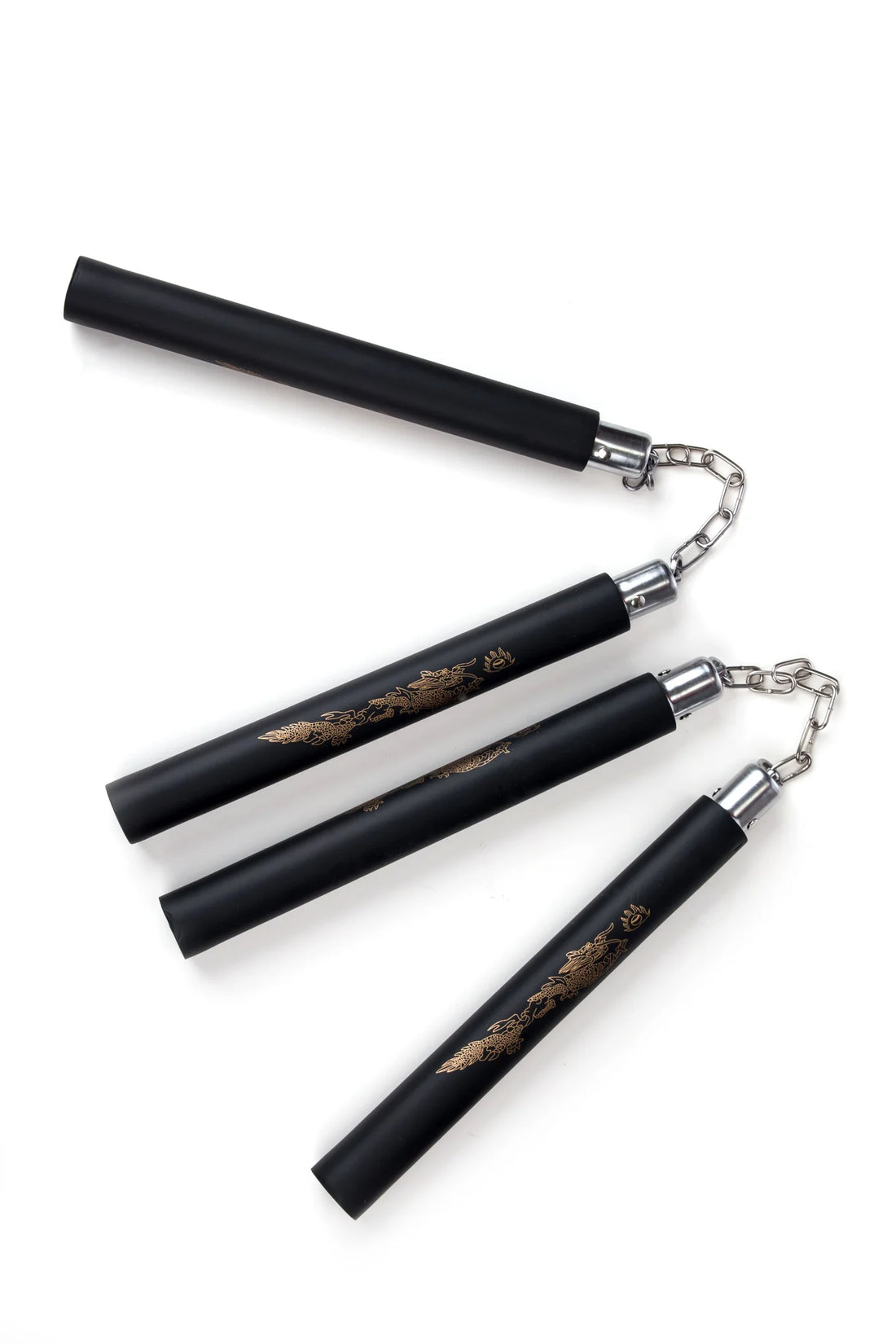Embarking on a journey into the world of martial arts can be both exciting and challenging. For beginners, mastering the basics is key to building a strong foundation. Nunchucks, with their dynamic and rhythmic movements, are a thrilling choice for those looking to enhance their martial arts skills. In this comprehensive guide, we'll break down the fundamental nunchuck techniques for beginners, providing a step-by-step roadmap to help you wield this iconic weapon with confidence.
Section 1: The Basics of Nunchucks
Before delving into specific techniques, it's essential to familiarize yourself with the basic components of nunchucks. A standard nunchuck consists of two sticks connected by a chain or rope. The sticks can vary in material, such as foam, wood, or metal, and the chain's length may differ. Understanding the anatomy of nunchucks will set the stage for effective training.
Section 2: Mastering the Nunchuck Grip
The proper grip is the foundation of effective nunchuck techniques. Begin by holding one stick in each hand, ensuring a firm yet flexible grip. The sticks should extend from the base of your fingers, allowing for a range of motion. Practice shifting the nunchucks between hands smoothly, getting comfortable with the weight and feel of the weapon.
Section 3: Stance and Footwork
A balanced and stable stance is crucial for nunchuck techniques. Stand with your feet shoulder-width apart, knees slightly bent, and your weight evenly distributed. Keep your body relaxed, allowing for fluid movements. Practice shifting your weight between your feet, maintaining stability while executing different techniques.
Section 4: Basic Strikes
a. Figure-Eight Strike
The figure-eight strike is a fundamental nunchuck technique that enhances coordination and control. Begin with a horizontal figure-eight motion, guiding the nunchucks in front of you. As you gain confidence, experiment with vertical figure-eight patterns. Focus on smooth transitions and maintaining a consistent rhythm.
b. Overhead Strike
Raise one hand above your head, allowing the nunchuck to swing downward. As the nunchuck descends, catch it with the opposite hand, creating a continuous overhead striking motion. Practice this movement with both hands, gradually increasing speed while maintaining precision.
c. Side Strike
Execute a side strike by swinging one nunchuck horizontally from your side. As the nunchuck reaches the apex of its arc, smoothly transition to the opposite hand. This basic side strike builds coordination and helps you become familiar with the rotational dynamics of the nunchucks.
Section 5: Blocking and Defense
a. Basic Blocks
Mastering basic blocks is essential for self-defense with nunchucks. Practice simple blocks, such as the high block and low block, to shield yourself from potential attacks. Use controlled movements, and focus on positioning the nunchucks to intercept strikes effectively.
b. Parrying
Parrying involves redirecting an opponent's strike away from you. Use circular motions and controlled sweeps to guide the incoming strike off its course. As you become more proficient, experiment with different parrying techniques to create openings for counterattacks.
Section 6: Smooth Transitions and Combos
Connecting individual techniques into seamless transitions and combinations is a hallmark of skilled nunchuck practitioners. Practice transitioning between strikes, blocks, and parries with fluidity. As you gain confidence, experiment with creating your own combinations, emphasizing creativity and adaptability.
Section 7: Freestyle Techniques
Freestyle techniques allow for personal expression and creativity in nunchuck training. Experiment with spins, flips, and directional changes, gradually incorporating these movements into your practice. Freestyle techniques not only enhance your skill set but also make your nunchuck routine dynamic and visually engaging.
Section 8: Safety Precautions
Safety should always be a top priority in nunchuck training. Start with slow and controlled movements, gradually increasing speed as you gain proficiency. Practice in an open space to minimize the risk of accidents, and consider wearing protective gear such as gloves to shield your hands during practice.
Section 9: Consistent Practice and Progression
Mastering nunchuck techniques requires consistent and dedicated practice. Set aside regular practice sessions to refine your skills and track your progression. Patience is key, as mastery of nunchucks is a journey that unfolds over time.
Conclusion:
In conclusion, mastering basic nunchuck techniques is an exhilarating and rewarding venture for beginners in martial arts. By focusing on proper grip, stance, and fundamental strikes, you can build a solid foundation for more advanced techniques. Incorporating blocks, defense maneuvers, and eventually freestyle techniques adds depth to your nunchuck practice. Remember, consistent practice and a commitment to safety are essential components of your journey toward becoming a skilled and confident nunchuck practitioner. Embrace the challenge, enjoy the learning process, and let the rhythmic movements of the nunchucks become an extension of your martial arts journey.
